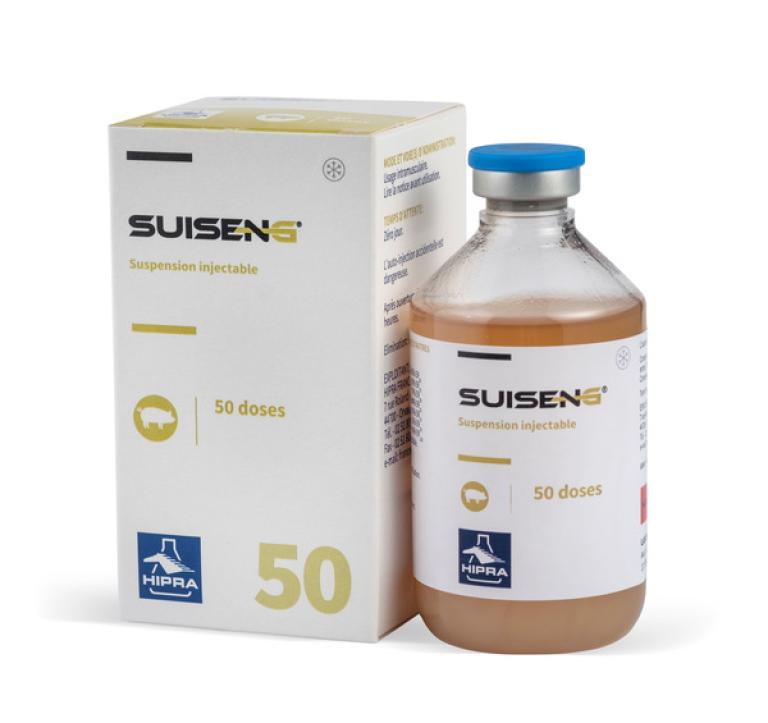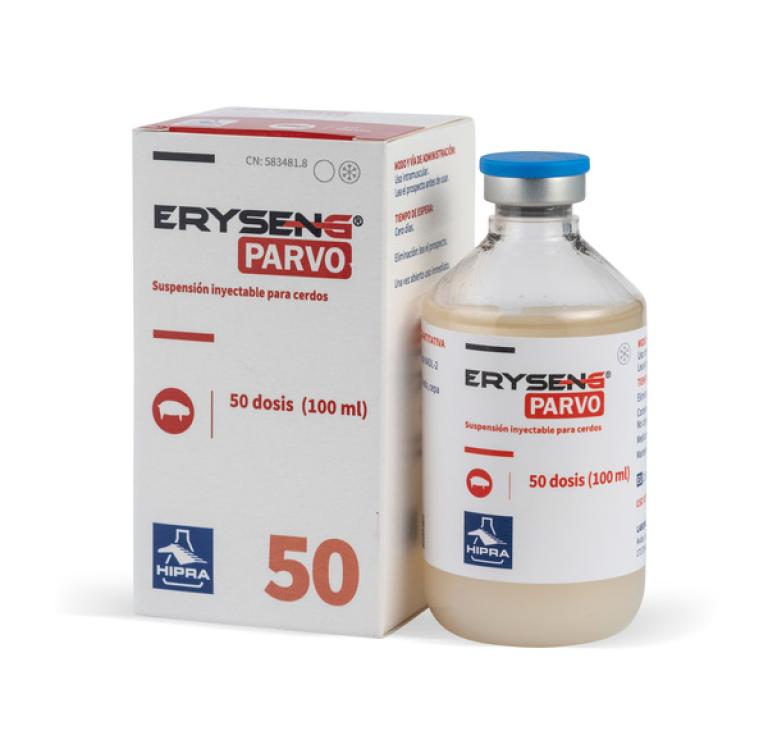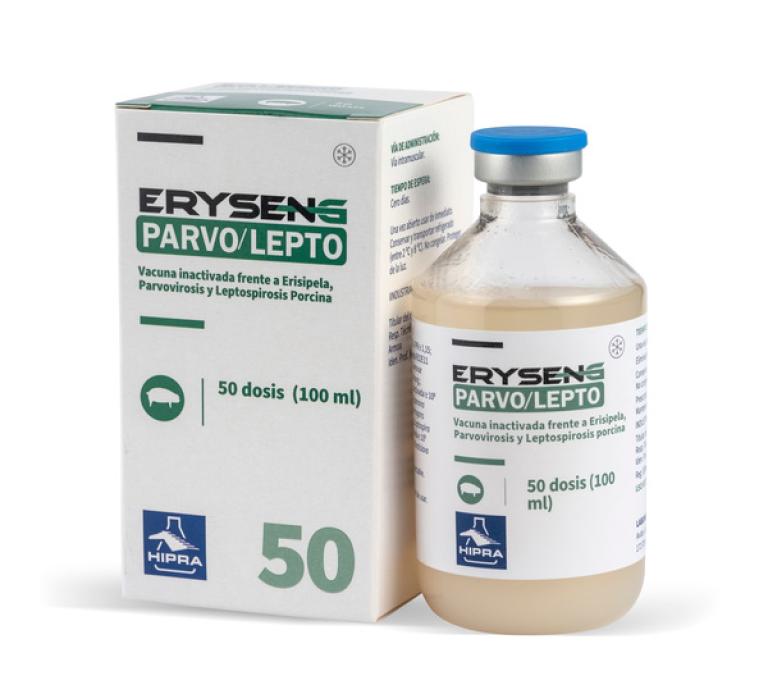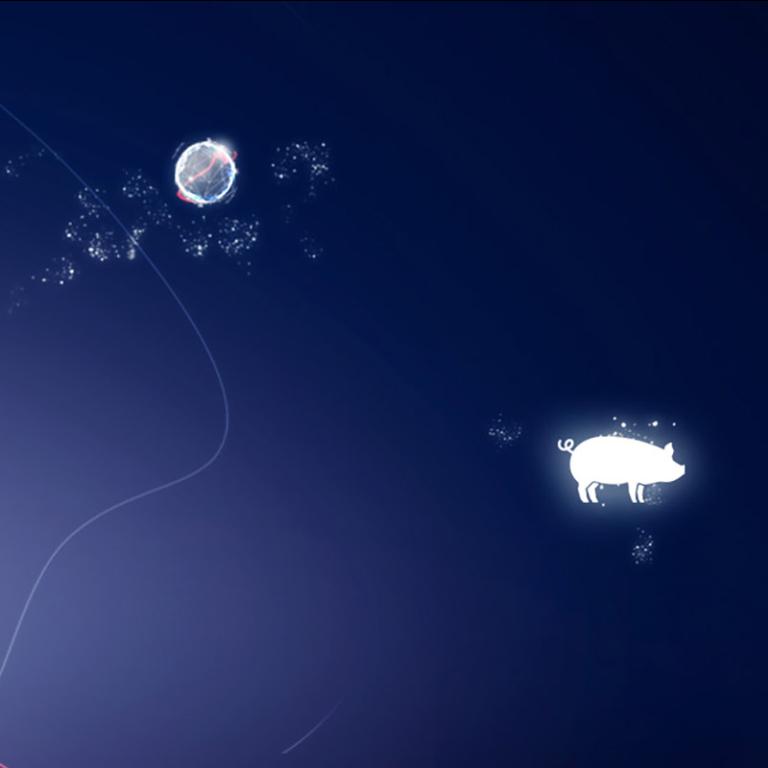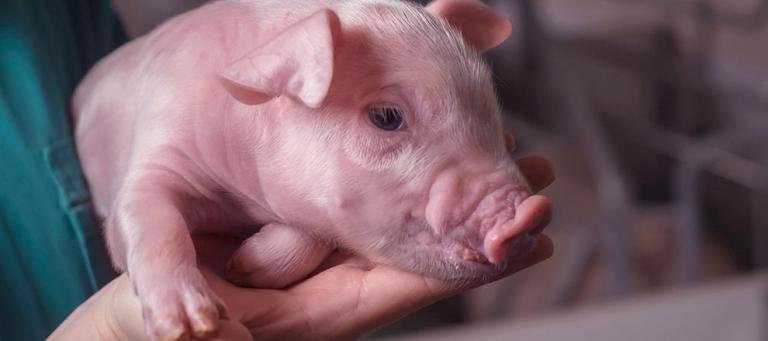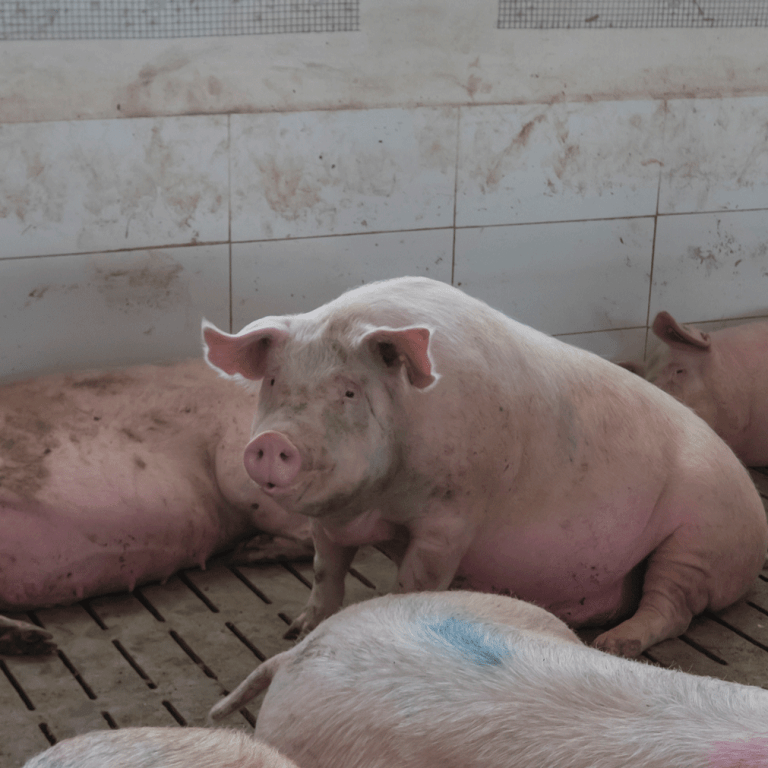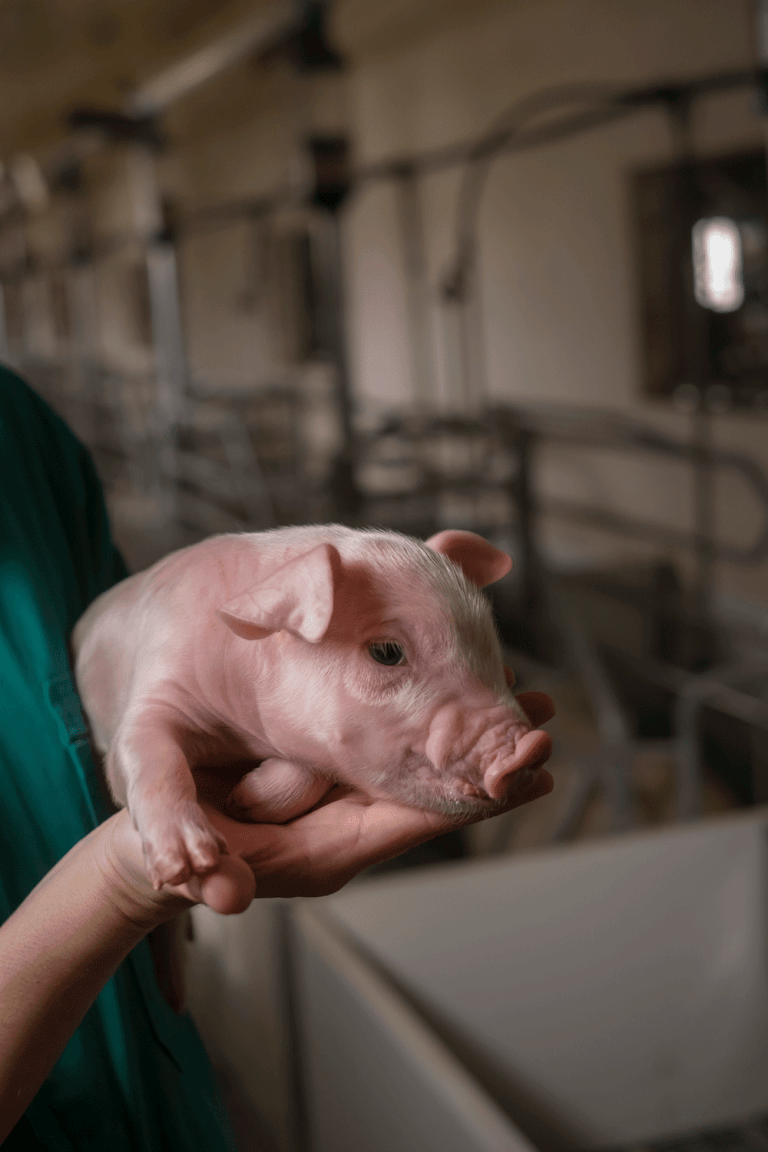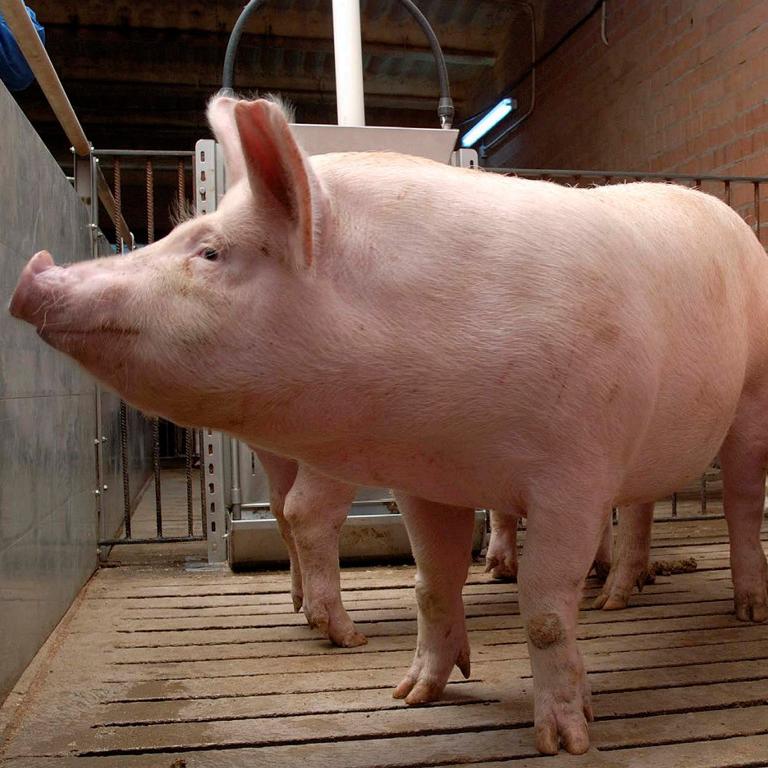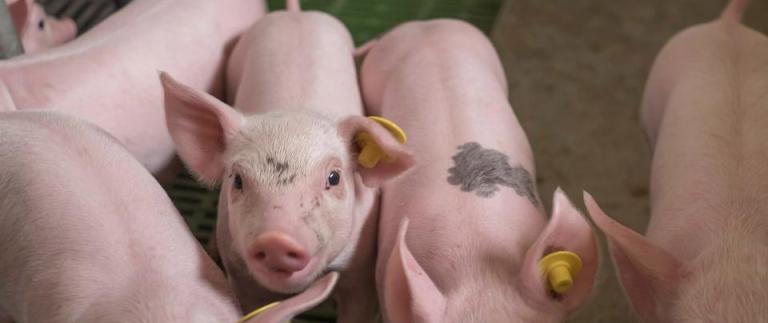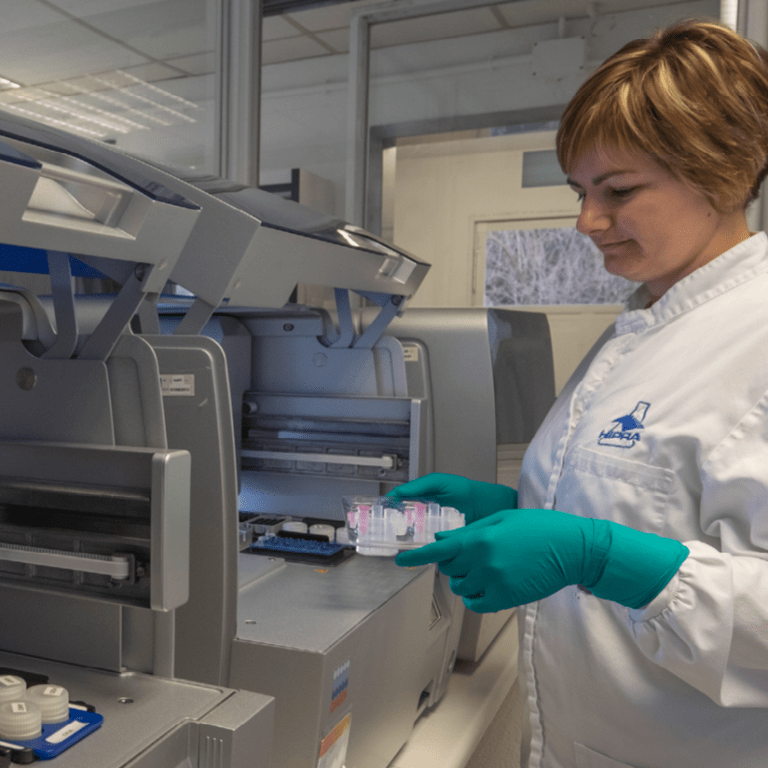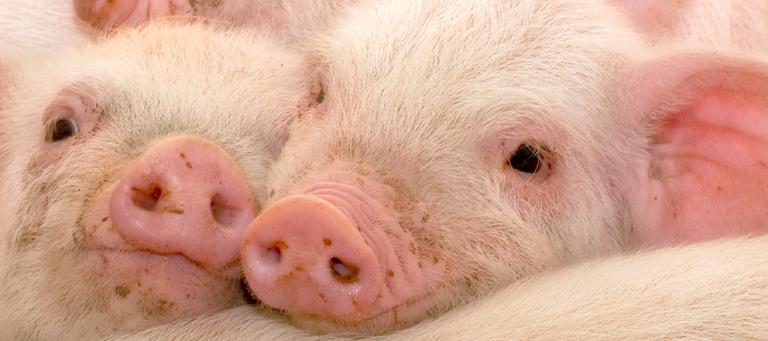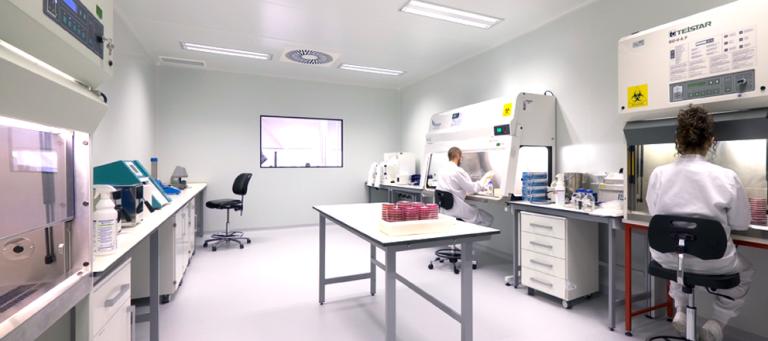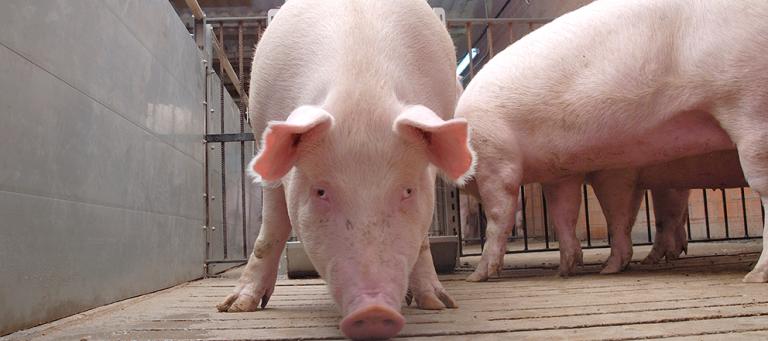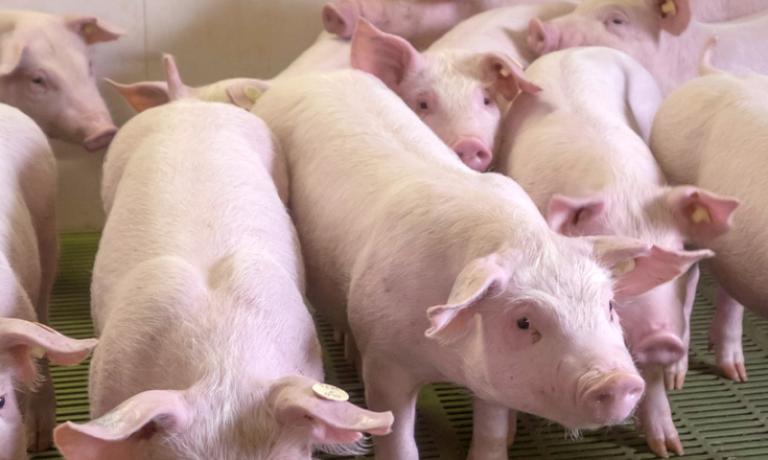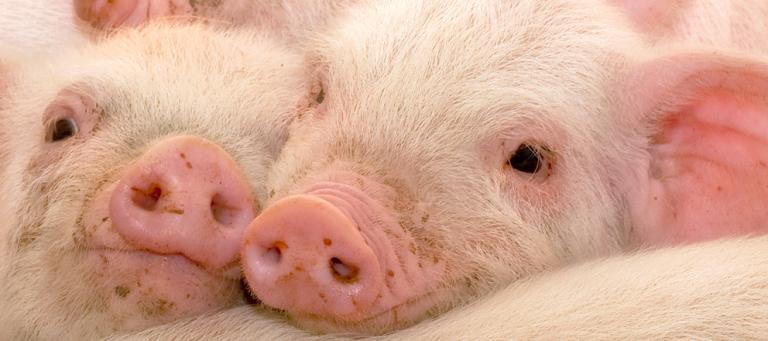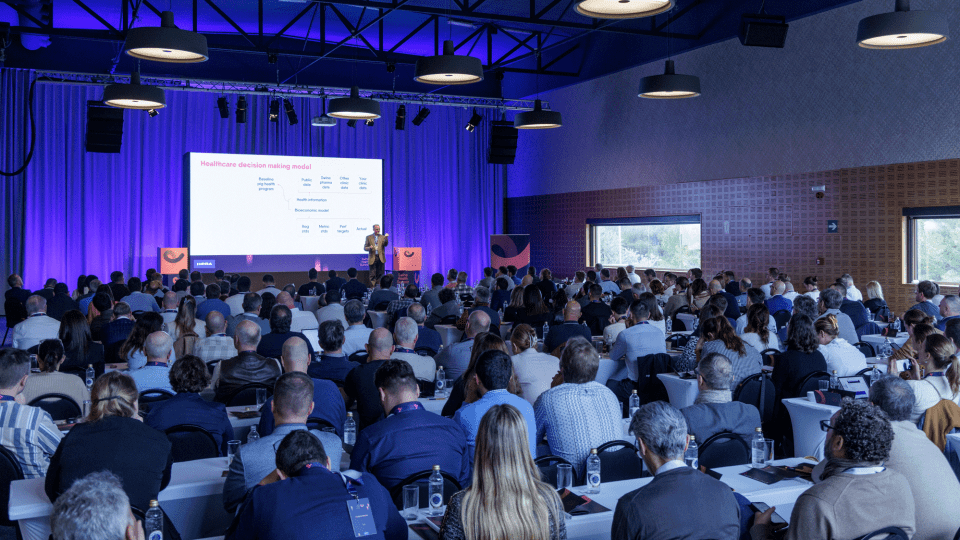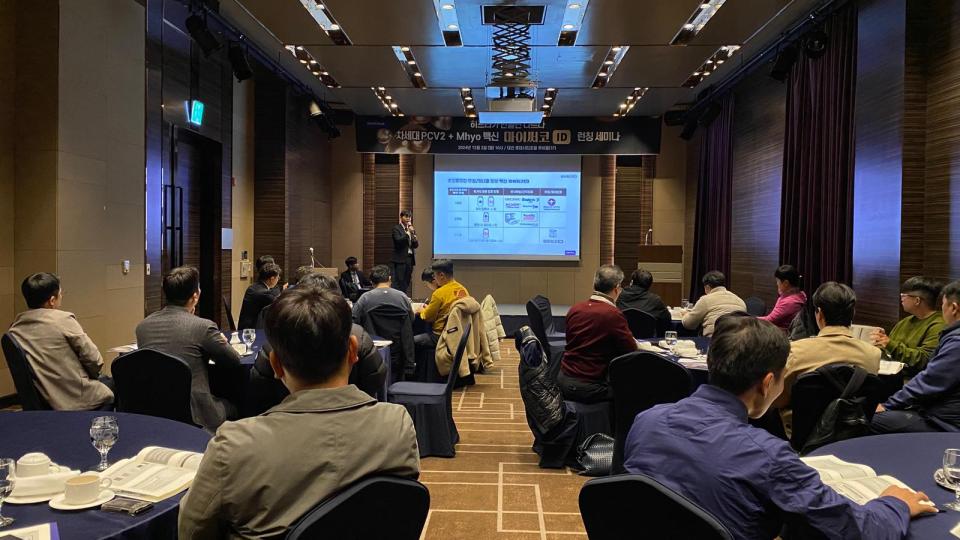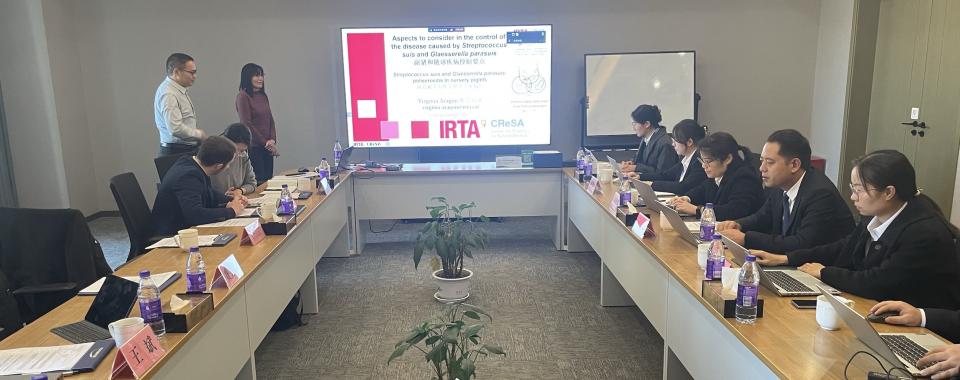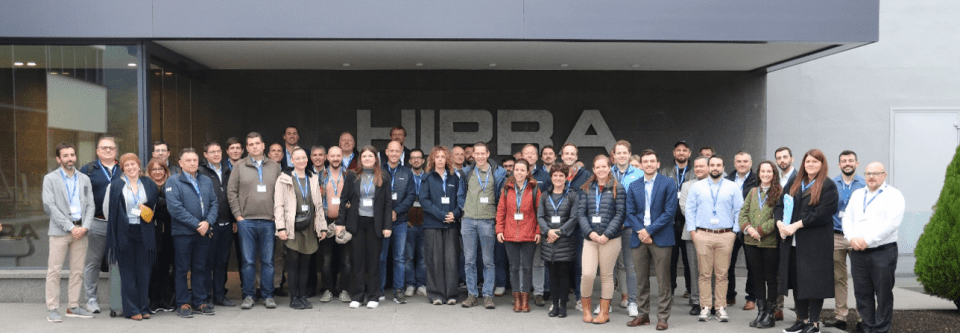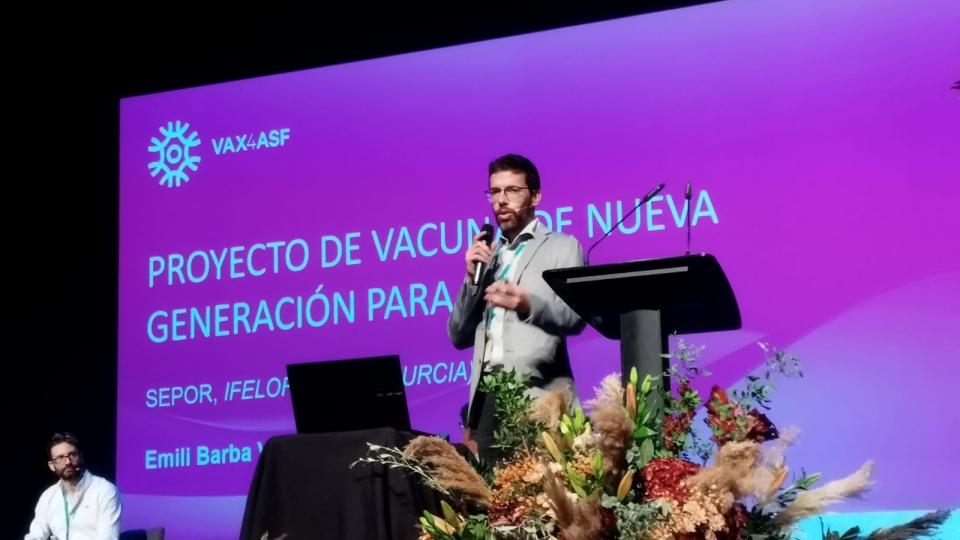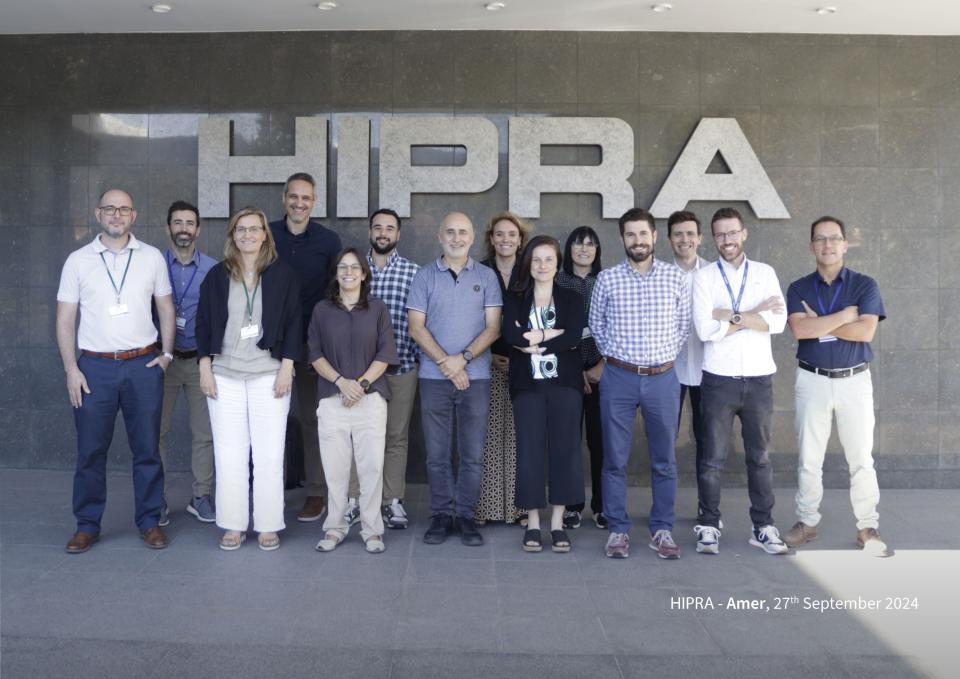The answer is quite simple: a priori, there is no limit.
In order to further explore this subject, some of the available data are discussed below.
In the past, it was thought that recombination between different PRRS virus strains was an uncommon phenomenon. However, examination of full-length genome sequences has demonstrated that:
- Recombination is very frequent.
- It occurs all along the genome, in both type 1 and type 2 strains.
In fact, recent studies have demonstrated that several strains in both genotypes are the result of the recombination; in some cases that recombination implies at least three different strains, or even more. Obviously, for recombination to happen, it is necessary that at least two different strains infect the same pig close in time. There are evidences that two or more PRRS virus strains can infect the same individual pig. Therefore, if recombination is much more common than we thought in the past, we cannot rule out the simultaneous coexistence of more than one strain on the same herd/farm, especially in the biggest ones. In fact, several studies have identified from two to eight strains in a same herd over a period from three months to four years.
Quasispecies. RNA viruses replicate with extremely high mutation rates, causing significant diversity. When this occurs, groups of diverse variants can simultaneously exist; this phenomenon is known as quasispecies. Thus, a quasispecies is a cloud, group or distribution of diverse variant viruses related by a similar mutation or mutations that collectively contribute to the characteristics of the population. In naturally PRRS virus-infected pigs, the virus exists as a quasispecies distribution of related but distinct viral variants. This phenomenon occurs independent of the strain and the host. Immunomodulation and quasispecies generation have been speculated to play a crucial role in PRRS virus infection and its chronic/persistent course.
© Laboratorios Hipra, S.A. All Rights Reserved.
No part of this website or any of its contents may be reproduced, copied, modified or adapted, without the prior written consent of HIPRA.
-
Albina E. Epidemiology of porcine reproductive and respiratory syndrome (PRRS): an overview. Vet Microbiol. 1997, 55:309-16.
-
Albina E, Carrat C, Charley B. Interferon-alpha response to swine arterivirus (PoAV), the porcine reproductive and respiratory syndrome virus. J Interferon Cytokine Res. 1998, 18:485-90.
-
Allende R, Laegreid WW, Kutish GF, Galeota JA, Wills RW, Osorio FA. Porcine reproductive and respiratory syndrome virus: description of persistence in individual pigs upon experimental infection. J Virol. 2000, 74:10834-7.
-
Andino R, Domingo E. Viral quasispecies. Virology. 2015, 479-480C:46-51.
-
Arruda AG, Friendship R, Carpenter J, Hand K, Ojkic D, Poljak Z. Investigation of the Occurrence of Porcine Reproductive and Respiratory Virus in Swine Herds Participating in an Area Regional Control and Elimination Project in Ontario, Canada. Transbound Emerg Dis. 2015, Mar 11.
-
Benfield DA, Christopher-Hennings J, Nelson EA, Rowland RR. , Nelson JK, Chase CL, Rossow KD, Collins JE. Persistent fetal infection of PRRS virus. In Proceedings of the28th Annual Meeting of the American Association of Swine. 1997: 455-8.
-
Benfield D, Nelson J, Rossow K, Nelson C, Steffen M, Rowland R. Diagnosis of persistent or prolonged porcine reproductive and respiratory syndrome virus infections. Vet Res. 2000, 31:71.
-
Benfield DA, Nelson C, Steffen M, Rowland RRR. Transmission of PRRSV by artificial insemination using extended semen seeded with different concentrations of PRRSV. Proceeding of the American Association of Swine Practitioners. 2000:405-408.
-
Bierk MD, Dee SA, Rossow KD, Otake S, Collins JE, Molitor TW. Transmission of porcine reproductive and respiratory syndrome virus from persistently infected sows to contact controls. Can J Vet Res. 2001, 65:261-6.
-
Blaha T. The "colorful" epidemiology of PRRS. Vet Res. 2000, 31:77-83.
-
Brockmeier SL, Lager KM. Experimental airborne transmission of porcine reproductive and respiratory syndrome virus and Bordetella bronchiseptica. Vet Microbiol. 2002, 89:267-75.
-
Brito B, Dee SA, Wayne S, Alvarez J, Perez A. Genetic diversity of PRRS virus collected from air samples in four different regions of concentrated swine production during a high incidence season. Viruses. 2014, 6:4424-36.
-
Cho JG, Dee SA, Deen J, Guedes A, Trincado C, Fano E, Jiang Y, Faaberg K, Collins JE, Murtaugh MP, Joo HS. Evaluation of the effects of animal age, concurrent bacterial infection, and pathogenicity of porcine reproductive and respiratory syndrome virus on virus concentration in pigs. Am J Vet Res. 2006, 67:489-93.
-
Cho JG, Dee SA. Porcine reproductive and respiratory syndrome virus. Theriogenology. 2006, 66:655-62.
-
Cho JG, Deen J, Dee SA. Influence of isolate pathogenicity on the aerosol transmission of Porcine reproductive and respiratory syndrome virus. Can J Vet Res. 2007, 71:23-7.
-
Christianson WT, Choi CS, Collins JE, Molitor TW, Morrison RB, Joo HS. Pathogenesis of porcine reproductive and respiratory syndrome virus infection in mid-gestation sows and fetuses. Can J Vet Res. 1993, 57:262-8.
-
Christopher-Hennings J, Nelson EA, Hines RJ, Nelson JK, Swenson SL, Zimmerman JJ, Chase CL, Yaeger MJ, Benfield DA. Persistence of porcine reproductive and respiratory syndrome virus in serum and semen of adult boars. J Vet Diagn Invest. 1995, 7:456-64.
-
Christopher-Hennings J, Nelson EA, Nelson JK, Hines RJ, Swenson SL, Hill HT, Zimmerman JJ, Katz JB, Yaeger MJ, Chase CC, et al. Detection of porcine reproductive and respiratory syndrome virus in boar semen by PCR. J Clin Microbiol. 1995, 33:1730-4.
-
Christopher-Hennings J, Nelson EA, Benfield DA. Detecting PRRSV in boar semen. Swine Health and Production. 1996, 4:37-9.
-
Christopher-Hennings J, Nelson EA, Nelson JK, Benfield DA. Effects of a modified-live virus vaccine against porcine reproductive and respiratory syndrome in boars. Am J Vet Res. 1997, 58:40-5.
-
Christopher-Hennings J. The pathogenesis of porcine reproductive and respiratory syndrome virus (PRRSV) in the boar. Vet Res. 2000, 31:57-8.
-
Christopher-Hennings J. Monitoring for porcine reproductive and respiratory syndrome virus (PRRSV) in the boar stud. J Swine Health Prod. 2001, 9:186-8.
-
Christopher-Hennings J, Holler LD, Benfield DA, Nelson EA. Detection and duration of porcine reproductive and respiratory syndrome virus in semen, serum, peripheral blood mononuclear cells, and tissues from Yorkshire, Hampshire, and Landrace boars. J Vet Diagn Invest. 2001, 13:133-42.
-
Corzo CA, Mondaca E, Wayne S, Torremorell M, Dee S, Davies P, Morrison RB. Control and elimination of porcine reproductive and respiratory syndrome virus. Virus Res. 2010, 154:185-92.
Cutler TD, Wang C, Hoff SJ, Kittawornrat A, Zimmerman JJ. Median infectious dose (ID₅₀) of porcine reproductive and respiratory syndrome virus isolate MN-184 via aerosol exposure. Vet Microbiol. 2011, 151:229-37. -
Dee SA, Joo HS. Prevention of the spread of porcine reproductive and respiratory syndrome virus in endemically infected pig herds by nursery depopulation. Vet Rec. 1994, 135:6-9.
-
Dee SA, Deen J, Rossow K, Wiese C, Otake S, Joo HS, Pijoan C. Mechanical transmission of porcine reproductive and respiratory syndrome virus throughout a coordinated sequence of events during cold weather. Can J Vet Res. 2002, 66:232-9.
-
Dee S, Deen J, Rossow K, Weise C, Eliason R, Otake S, Joo HS, Pijoan C. Mechanical transmission of porcine reproductive and respiratory syndrome virus throughout a coordinated sequence of events during warm weather. Can J Vet Res. 2003, 67:12-9.
-
Dee SA, Deen J, Otake S, Pijoan C. An experimental model to evaluate the role of transport vehicles as a source of transmission of porcine reproductive and respiratory syndrome virus to susceptible pigs. Can J Vet Res. 2004, 68:128-33.
-
Dee SA, Martinez BC, Clanton C. Survival and infectivity of porcine reproductive and respiratory syndrome virus in swine lagoon effluent. Vet Rec. 2005, 156:56-7.
-
Dee SA, Cano JP, Spronk G, Reicks D, Ruen P, Pitkin A, Polson D. Evaluation of the long-term effect of air filtration on the occurrence of new PRRSV infections in large breeding herds in swine-dense regions. Viruses. 2012, 4:654-62.
-
Duan X, Nauwynck HJ, Pensaert MB. Virus quantification and identification of cellular targets in the lungs and lymphoid tissues of pigs at different time intervals after inoculation with porcine reproductive and respiratory syndrome virus (PRRSV). Vet Microbiol. 1997, 56:9-19.
-
Goldberg TL, Lowe JF, Milburn SM, Firkins LD. Quasispecies variation of porcine reproductive and respiratory syndrome virus during natural infection. Virology. 2003, 317:197-207.
-
Guarino H, Cox RB, Goyal SM, Patnayak DP. Survival of Porcine Reproductive and Respiratory Syndrome Virus in Pork Products. Food Environ Virol. 2013 Jun 13.
-
Hall W, Neumann E. Fresh Pork and Porcine Reproductive and Respiratory Syndrome Virus: Factors Related to the Risk of Disease Transmission. Transbound Emerg Dis. 2013 Sep 10.
-
Hermann JR, Muñoz-Zanzi CA, Roof MB, Burkhart K, Zimmerman JJ. Probability of porcine reproductive and respiratory syndrome (PRRS) virus infection as a function of exposure route and dose. Vet Microbiol. 2005, 110:7-16.
-
Hermann JR, Hoff S, Muñoz-Zanzi C, Yoon KJ, Roof M, Burkhardt A, Zimmerman J. Effect of temperature and relative humidity on the stability of infectious porcine reproductive and respiratory syndrome virus in aerosols. Vet Res. 2007, 38:81-93.
-
Hooper CC, Van Alstine WG, Stevenson GW, Kanitz CL. Mice and rats (laboratory and feral) are not a reservoir for PRRS virus. J Vet Diagn Invest. 1994, 6:13-5.
-
Kappes MA, Faaberg KS. PRRSV structure, replication and recombination: Origin of phenotype and genotype diversity. Virology. 2015, 479-480:475-86.
-
Karniychuk UU, Saha D, Geldhof M, Vanhee M, Cornillie P, Van den Broeck W, Nauwynck HJ. Porcine reproductive and respiratory syndrome virus (PRRSV) causes apoptosis during its replication in fetal implantation sites. Microb Pathog. 2011, 51:194-202.
-
Karniychuk UU, Nauwynck HJ. Pathogenesis and prevention of placental and transplacental porcine reproductive and respiratory syndrome virus infection. Vet Res. 2013, 44:95.
-
Kristensen CS, Bøtner A, Takai H, Nielsen JP, Jorsal SE. Experimental airborne transmission of PRRS virus. Vet Microbiol. 2004, 99:197-202.
-
Labarque GG, Nauwynck HJ, Van Reeth K, Pensaert MB. Effect of cellular changes and onset of humoral immunity on the replication of porcine reproductive and respiratory syndrome virus in the lungs of pigs. J Gen Virol. 2000, 81:1327-34.
-
Larochelle R1, D'Allaire S, Magar R. Molecular epidemiology of porcine reproductive and respiratory syndrome virus (PRRSV) in Québec. Virus Res. 2003, 96:3-14.
-
Le Potier MF, Blanquefort P, Morvan E, Albina E. Results of a control programme for the porcine reproductive and respiratory syndrome in the French 'Pays de la Loire' region. Vet Microbiol. 1997, 55:355-60.
-
Magar R, Larochelle R, Dea S, Gagnon CA, Nelson EA, Christopher-Hennings J, Benfield DA. Antigenic comparison of Canadian and US isolates of porcine reproductive and respiratory syndrome virus using monoclonal antibodies to the nucleocapsid protein. Can J Vet Res. 1995, 59:232-4.
-
Martín-Valls GE, Kvisgaard LK, Tello M, Darwich L, Cortey M, Burgara-Estrella AJ, Hernández J, Larsen LE, Mateu E. Analysis of ORF5 and full-length genome sequences of porcine reproductive and respiratory syndrome virus isolates of genotypes 1 and 2 retrieved worldwide provides evidence that recombination is a common phenomenon and may produce mosaic isolates. J Virol. 2014, 88:3170-81.
-
Nodelijk G. Porcine reproductive and respiratory syndrome (PRRS) with special reference to clinical aspects and diagnosis. A review. Vet Q. 2002, 24:95-100.
-
Nodelijk G, Nielen M, De Jong MC, Verheijden JH. A review of porcine reproductive and respiratory syndrome virus in Dutch breeding herds: population dynamics and clinical relevance. Prev Vet Med. 2003, 60:37-52.
-
Otake S, Dee SA, Rossow KD, Joo HS, Deen J, Molitor TW, Pijoan C. Transmission of porcine reproductive and respiratory syndrome virus by needles. Vet Rec. 2002, 150:114-5.
-
Otake S, Dee SA, Rossow KD, Moon RD, Trincado C, Pijoan C. Transmission of porcine reproductive and respiratory syndrome virus by houseflies (Musca domestica). Vet Rec. 2003, 152:73-6.
-
Otake S, Dee SA, Moon RD, Rossow KD, Trincado C, Farnham M, Pijoan C. Survival of porcine reproductive and respiratory syndrome virus in houseflies. Can J Vet Res. 2003, 67:198-203.
-
Otake S, Dee SA, Moon RD, Rossow KD, Trincado C, Pijoan C. Evaluation of mosquitoes, Aedes vexans, as biological vectors of porcine reproductive and respiratory syndrome virus. Can J Vet Res. 2003, 67:265-70.
-
Otake S, Dee S, Corzo C, Oliveira S, Deen J. Long-distance airborne transport of infectious PRRSV and Mycoplasma hyopneumoniae from a swine population infected with multiple viral variants. Vet Microbiol. 2010, 145:198-208.
-
Pirtle EC, Beran GW. Stability of porcine reproductive and respiratory syndrome virus in the presence of fomites commonly found on farms. J Am Vet Med Assoc. 1996, 208:390-2.
-
Pitkin A, Deen J, Dee S. Further assessment of fomites and personnel as vehicles for the mechanical transport and transmission of porcine reproductive and respiratory syndrome virus. Can J Vet Res. 2009, 73:298-302.
-
Prieto C, García C, Simarro I, Castro JM. Temporal shedding and persistence of porcine reproductive and respiratory syndrome virus in boars. Vet Rec. 2004, 154:824-7.
-
Prieto C, Castro JM. Porcine reproductive and respiratory syndrome virus infection in the boar: a review. Theriogenology. 2005, 63:1-16.
-
Rossow KD, Bautista EM, Goyal SM, Molitor TW, Murtaugh MP, Morrison RB, Benfield DA, Collins JE. Experimental porcine reproductive and respiratory syndrome virus infection in one-, four-, and 10-week-old pigs. J Vet Diagn Invest. 1994, 6:3-12.
-
Rossow KD, Collins JE, Goyal SM, Nelson EA, Christopher-Hennings J, Benfield DA. Pathogenesis of porcine reproductive and respiratory syndrome virus infection in gnotobiotic pigs. Vet Pathol. 1995, 32:361-73.
-
Rowland RR, Steffen M, Ackerman T, Benfield DA. The evolution of porcine reproductive and respiratory syndrome virus: quasispecies and emergence of a virus subpopulation during infection of pigs with VR-2332. Virology. 1999, 259:262-6.
-
Schurrer JA, Dee SA, Moon RD, Murtaugh MP, Finnegan CP, Deen J, Kleiboeker SB, Pijoan CB. Retention of ingested porcine reproductive and respiratory syndrome virus in houseflies. Am J Vet Res. 2005, 66:1517-25.
-
Snijder EJ, Kikkert M, Fang Y. Arterivirus molecular biology and pathogenesis. J Gen Virol. 2013, 94:2141-63.
-
Swenson SL, Zimmerman J. Porcine reproductive and respiratory syndrome virus in experimentally infected boars: isolation from semen. In Proceedings of the American Association of Swine Practitioners. 1993, 719-20.
-
Swenson SL, Hill HT, Zimmerman JJ, Evans LE, Landgraf JG, Wills RW, Sanderson TP, McGinley MJ, Brevik AK, Ciszewski DK, et al. Excretion of porcine reproductive and respiratory syndrome virus in semen after experimentally induced infection in boars. J Am Vet Med Assoc. 1994, 204:1943-8.
-
Torremorell M, Pijoan C, Janni K, Walker R, Joo HS. Airborne transmission of Actinobacillus pleuropneumoniae and porcine reproductive and respiratory syndrome virus in nursery pigs. Am J Vet Res. 1997, 58:828-32.
-
Voicu IL, Silim A, Morin M, Elazhary MASY. Interaction of porcine reproductive and respiratory syndrome virus with swine monocytes. Vet Rec. 1994, 134:422-423.
-
Yoon IJ, Joo HS, Christianson WT, et al. Persistent and contact infection in nursery pigs experimentally infected with porcine reproductive and respiratory syndrome (PRRS) virus. Swine Health and Production. 1993, 1:5-8.
-
Wagstrom EA, Chang CC, Yoon KJ, Zimmerman JJ. Shedding of porcine reproductive and respiratory syndrome virus in mammary gland secretions of sows. Am J Vet Res. 2001, 62:1876-80.
-
Wills RW, Zimmerman JJ, Yoon KJ, Swenson SL, McGinley MJ, Hill HT, Platt KB, Christopher-Hennings J, Nelson EA. Porcine reproductive and respiratory syndrome virus: a persistent infection. Vet Microbiol. 1997, 55:231-40.
-
Wills RW, Zimmerman JJ, Yoon KJ, Swenson SL, Hoffman LJ, McGinley MJ, Hill HT, Platt KB. Porcine reproductive and respiratory syndrome virus: routes of excretion. Vet Microbiol. 1997, 57:69-81.
-
Wills RW, Doster AR, Galeota JA, Sur JH, Osorio FA. Duration of infection and proportion of pigs persistently infected with porcine reproductive and respiratory syndrome virus. J Clin Microbiol. 2003, 41:58-62.
-
Wyckoff AC, Henke SE, Campbell TA, Hewitt DG, VerCauteren KC. Feral swine contact with domestic swine: a serologic survey and assessment of potential for disease transmission. J Wildl Dis. 2009, 45:422-9.
-
Zimmerman JJ, Yoon KJ, Wills RW, Swenson SL. General overview of PRRSV: a perspective from the United States. Vet Microbiol. 1997, 55:187-96.




